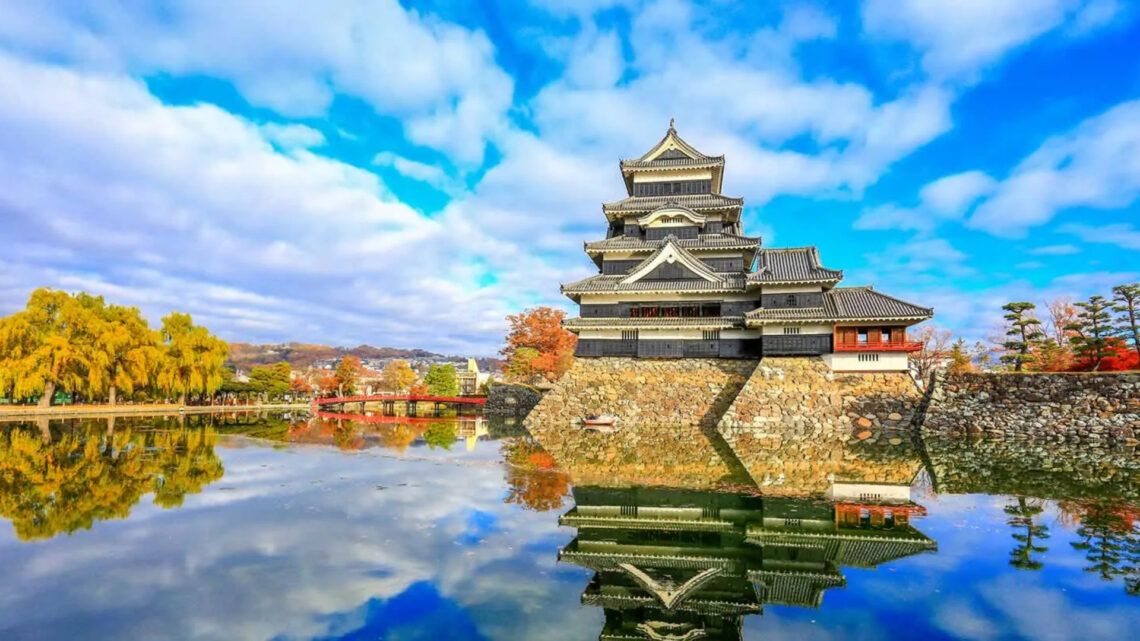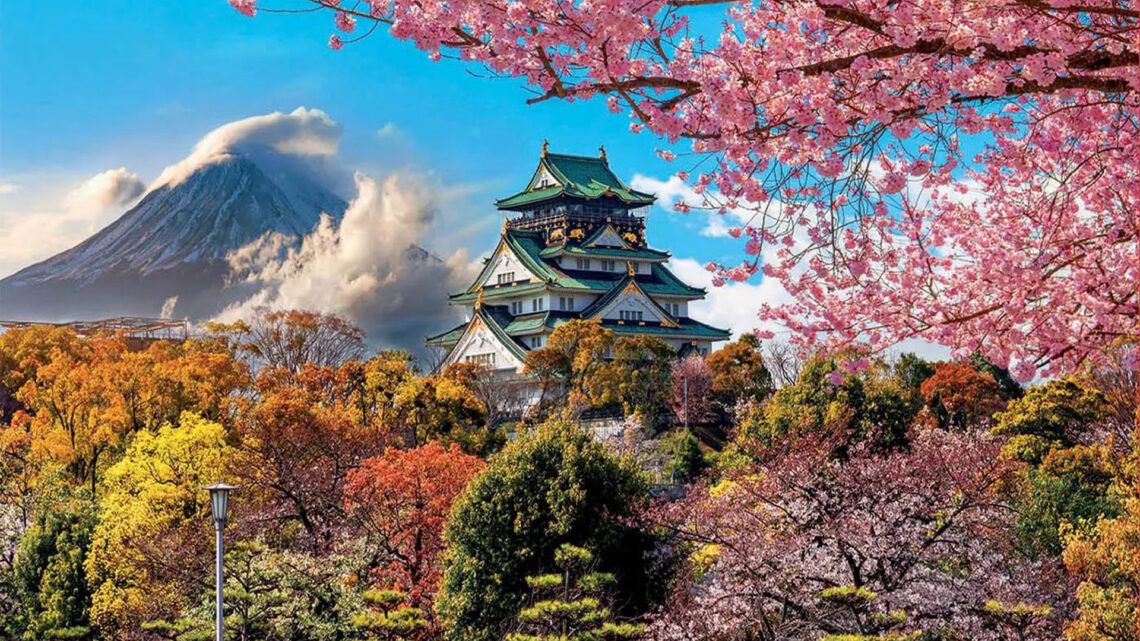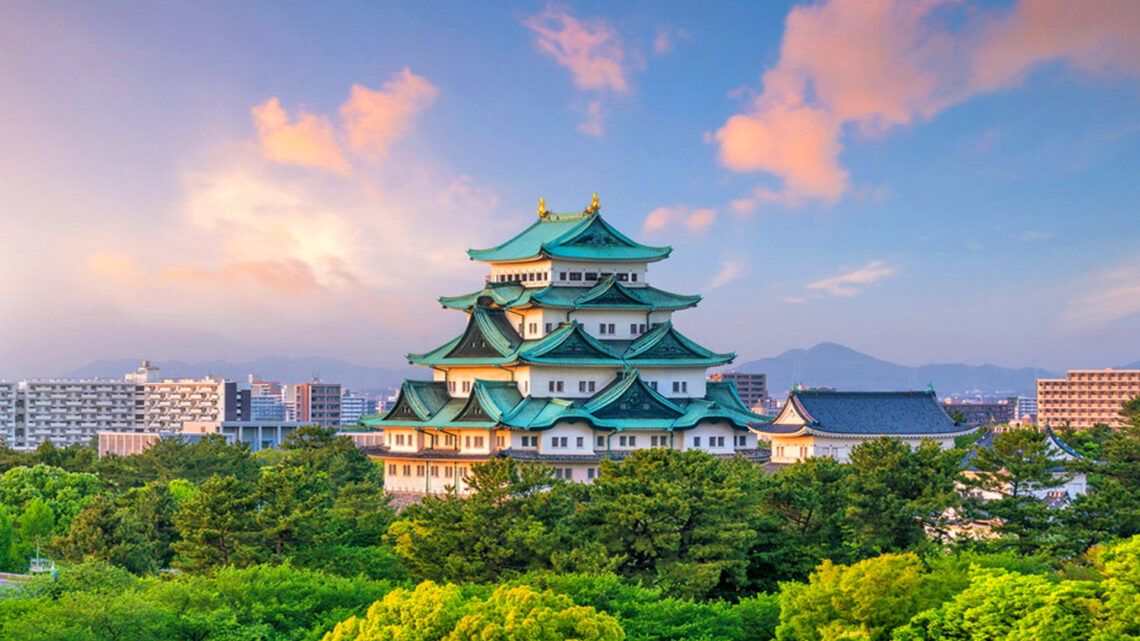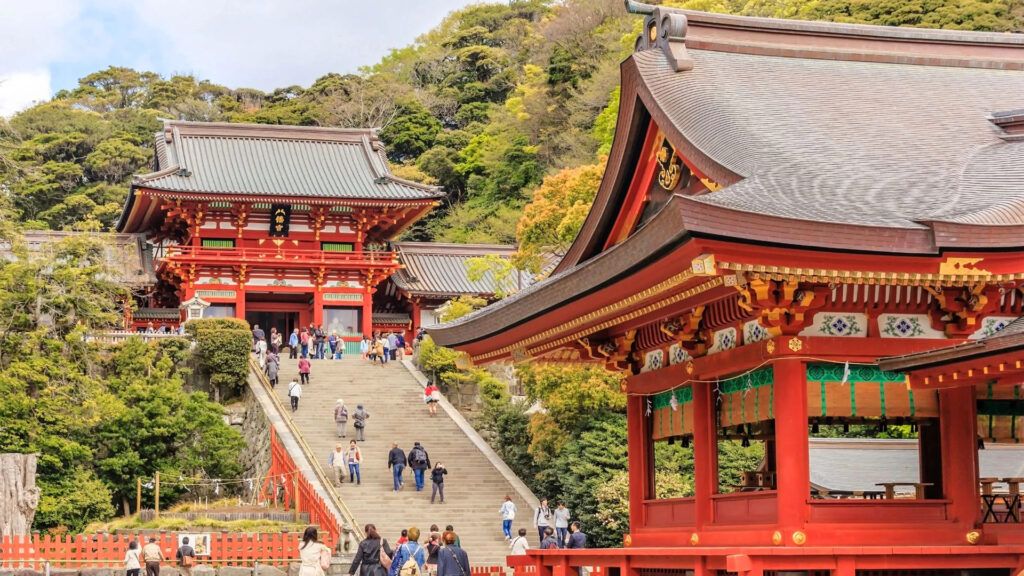
Kamakura is a picturesque coastal city in Kanagawa, Japan, located just about an hour’s train ride from Tokyo. Despite its relatively small size, Kamakura holds immense historical significance and is rich in cultural treasures. The city is renowned for its impressive number of Buddhist temples, Shinto shrines, and especially for the great bronze statue of Buddha, affectionately known as the “Daibutsu.” In this comprehensive text, we will explore the many facets of Kamakura, shed light on the city’s history, and introduce the attractions that have fascinated visitors for centuries.
The History of Kamakura
Kamakura as a Political and Cultural Power Center
In the late 12th century, Kamakura was the capital of Japan and the seat of the Kamakura Shogunate, which ruled from 1185 to 1333. This period, known as the Kamakura Period, was a time of significant political and cultural changes in Japan. Under the leadership of the first shogun, Minamoto no Yoritomo, Kamakura developed into an important power center that guided the country during a time of great upheaval.
The Kamakura Period marked the beginning of the samurai system in Japan and a departure from the aristocratic rule that had dominated the country’s political life until then. The shogun, as the military ruler, established a stable government that stood in contrast to the emperor in Kyoto. This dual power structure shaped Japanese history until the 19th century.
During this time, Kamakura also experienced a cultural flourishing. Buddhism, especially Zen Buddhism, gained importance and shaped the spiritual and cultural life of the city. Many of the temples and shrines that still exist today date back to this period and testify to Kamakura’s deeply rooted religious and cultural tradition.
The Kamakura Shogunate ended in 1333 when the city fell after a siege by imperial troops. This led to a period of decline as political power shifted to Kyoto and later to Edo (present-day Tokyo). However, Kamakura remained significant as a religious and cultural center.
Over the centuries, Kamakura has been revived repeatedly, especially through tourism, which began to flourish in the 19th century with the opening of the railway line to Tokyo. Today, Kamakura is a popular destination for visitors who wish to experience the historical atmosphere, spiritual sites, and natural beauty of the region.
Kamakura’s Buddhist Temples
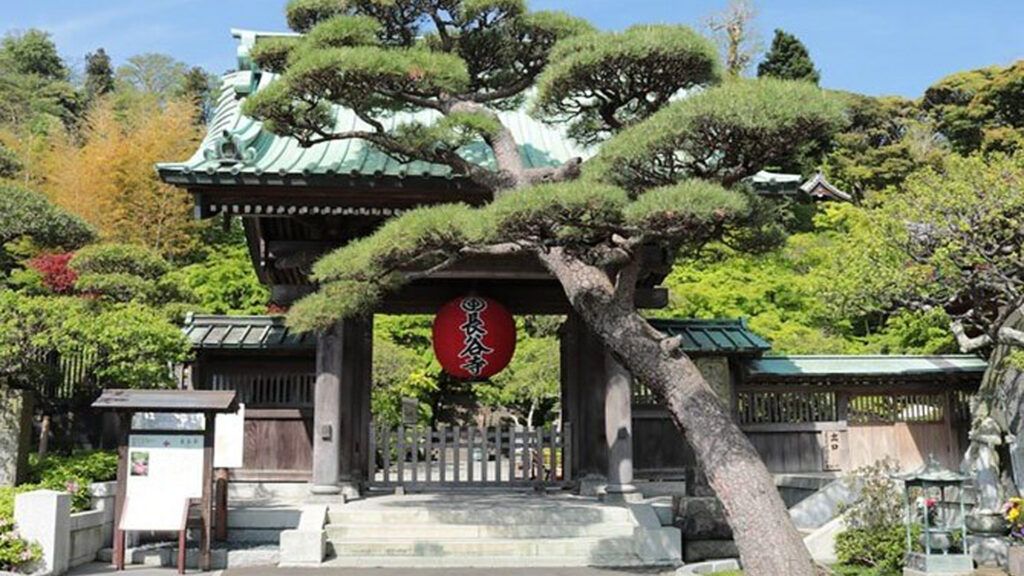
Kamakura is home to an impressive number of Buddhist temples, many of which have a long history and deep spiritual significance. These temples are not only religious sites but also cultural treasures, housing architectural masterpieces and important works of art.
Kotoku-in: The Great Buddha of Kamakura
Kotoku-in is one of the most famous temples in Kamakura, primarily because of its famous statue, the Daibutsu. This large bronze statue of Amida Buddha stands about 13.35 meters tall and weighs around 93 tons. It was erected in the 13th century and is one of Japan’s most famous Buddhist statues.
The Daibutsu of Kamakura is a symbol of peace and constancy. Although the original temple hall that housed the statue was destroyed by a tsunami in the 15th century, the statue has stood outdoors ever since and is one of the most photographed landmarks in Kamakura. The sight of the Daibutsu against the backdrop of wooded hills is an unforgettable experience for any visitor.
Hase-dera: The Temple of the Eleven-Headed Kannon
Hase-dera is another significant temple in Kamakura, known for its impressive statue of Kannon, the goddess of compassion. This eleven-headed statue is one of Japan’s largest wooden statues and also dates back to the 8th century. The temple itself is situated on a hillside, offering breathtaking views of the city and the sea.
Hase-dera Temple is particularly famous for its lush gardens, which offer a different spectacle in each season. In spring, cherry blossoms bloom, in summer hydrangeas, in autumn maple trees, and in winter camellias. The temple is a place of tranquility and reflection, where visitors can experience nature at its finest.
Kencho-ji: The Oldest Zen Temple in Kamakura
Kencho-ji is the oldest Zen temple in Kamakura and was founded in 1253. It is considered the first of the five great Zen temples in the city and is a major center of Zen Buddhism in Japan. The temple complex includes several buildings, including the main gate, the Butsuden (Buddha Hall), and the Bonsho (great temple bell).
Kencho-ji is also known for its Zen garden, which is a symbol of meditation and inner peace. The temple offers regular Zazen (meditation) sessions for visitors seeking a deeper experience of Zen practice. The temple’s serene atmosphere and the beauty of its architecture make Kencho-ji a place of spiritual renewal.
Engaku-ji: A Temple of Zen and Meditation
Engaku-ji is another significant Zen temple in Kamakura, founded in 1282 to commemorate those who died in the Mongol invasions. The temple is set in a wooded valley and provides a peaceful environment for meditation and spiritual exercises. Engaku-ji is known for its impressive architecture, including the main gate (Sanmon) and the Shariden (Reliquary Hall), which is said to house a tooth of the Buddha.
The temple is also famous for its Zen gardens, which reflect Zen philosophy. The gardens invite visitors to pause and reflect on the impermanence and beauty of life. Engaku-ji is a place deeply connected with Zen tradition, offering visitors a chance to immerse themselves in the world of Zen Buddhism.
Tsurugaoka Hachiman-gu: The Heart of Kamakura
Although not a Buddhist temple, Tsurugaoka Hachiman-gu is one of the most important shrines in Kamakura and a symbol of the city. This Shinto shrine was founded in 1063 and is dedicated to the god of war, Hachiman. It played a central role in Kamakura’s history and was closely associated with the Kamakura Shogunate.
The shrine complex includes several buildings, including the main hall (Honden), an impressive stone bridge, and a large area with ponds and gardens. Tsurugaoka Hachiman-gu is also a popular site for weddings and other religious ceremonies, highlighting its ongoing importance in the lives of the people of Kamakura.
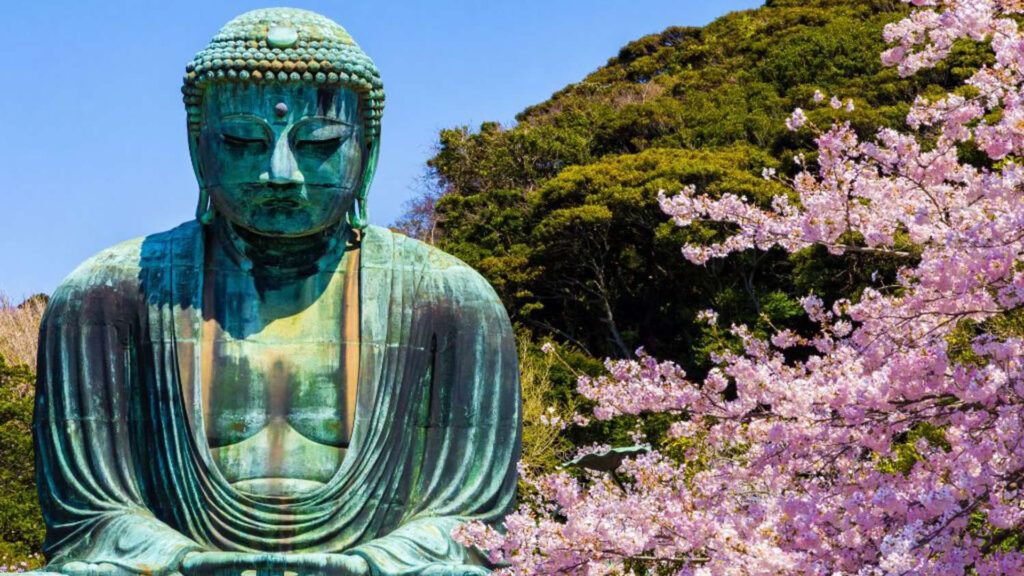
The Great Bronze Statue of Buddha: The Daibutsu
The Daibutsu of Kamakura is undoubtedly one of Japan’s most famous landmarks. This massive bronze statue represents Amida Buddha, the embodiment of infinite light and life in Buddhist belief. The statue was originally erected in 1252 and has a fascinating history closely tied to the cultural and religious currents of the Kamakura Period.
The Daibutsu of Kamakura is not only a work of art but also a profound symbol of Buddhist faith. The statue exudes serenity and majesty, reflecting the unshakable nature of the Buddha. Its size and expression convey a message of peace and constancy that continues to resonate with many people today.
The statue stands outdoors, surrounded by nature, emphasizing its connection to the world and its people. The Daibutsu is not only a tourist destination but also a pilgrimage site for believers seeking strength and inspiration here.
Erecting the statue was a monumental task that required great technical and artistic skill. It was designed and built by several Buddhist masters and artists. Originally, the Daibutsu was housed in a large wooden hall, which was destroyed by a tsunami in the 15th century. Since then, the statue has stood outdoors and has survived numerous natural disasters and wars, a testament to its robustness and the deep faith of the people in its significance.
The statue has captivated many admirers over the centuries and has become an important symbol of the city of Kamakura and Japanese culture in general. Its preservation and restoration over the years demonstrate the appreciation it has received from generation to generation.
Other Temples and Shrines in Kamakura
In addition to the main attractions mentioned, there are many other temples and shrines in Kamakura worth visiting, each offering its unique history and atmosphere.
Meigetsu-in: The Hydrangea Temple
Meigetsu-in, also known as the Hydrangea Temple, is particularly popular in June when the hydrangeas are in full bloom, turning the temple into a sea of blue and purple. This Zen temple was founded in 1383 and is also famous for its round window in the main building, called the “Satori no Mado” (Window of Enlightenment). It offers a perfect view of the temple’s Zen garden and symbolizes the path to enlightenment.
Jochi-ji: A Quiet Retreat
Jochi-ji is one of Kamakura’s five great Zen temples and offers a quieter, less-visited alternative to the city’s more famous temples. Founded in 1281, the temple is set in a peaceful wooded area and is ideal for visitors seeking relaxation and spiritual renewal away from the tourist crowds. The temple also houses several interesting statues, including a depiction of Shaka Nyorai, the historical Buddha.
Zeniarai Benten: The Money Washing Shrine
Zeniarai Benten Shrine is one of Kamakura’s most unusual shrines. It is known for the ritual of money washing, where visitors clean coins and banknotes in a spring to increase their wealth. The shrine, founded in 1185 by Minamoto no Yoritomo, is dedicated to the goddess Benten, one of Japan’s Seven Lucky Gods. The shrine is located in a cave and surrounded by a mystical atmosphere, making it a fascinating place for visitors.
Hokoku-ji: The Bamboo Grove Temple
Hokoku-ji, also known as the Bamboo Grove Temple, is famous for its dense bamboo grove that lies behind the temple building. Founded in 1334, this temple belongs to the Rinzai school of Zen Buddhism. Walking through the bamboo grove offers a sense of tranquility and seclusion, heightened by the soft rustling of bamboo leaves in the wind. Hokoku-ji is also known for its tea ceremonies, held in a small teahouse within the bamboo forest, providing visitors with an opportunity to experience traditional Japanese culture in a serene setting.
Enoshima: The Sacred Island
Although not directly in Kamakura, Enoshima is a nearby island often visited by those exploring the area. Connected to Kamakura by a bridge, Enoshima offers a mix of natural attractions, shrines, and leisure activities. The Enoshima Shrine, dedicated to the goddess Benzaiten, is one of the island’s most significant religious sites. Visitors can also enjoy spectacular views of Mount Fuji, relax on the island’s beautiful beaches, and explore the impressive Enoshima Cave, which cuts deep into the coastline.
The Cultural Significance of Kamakura
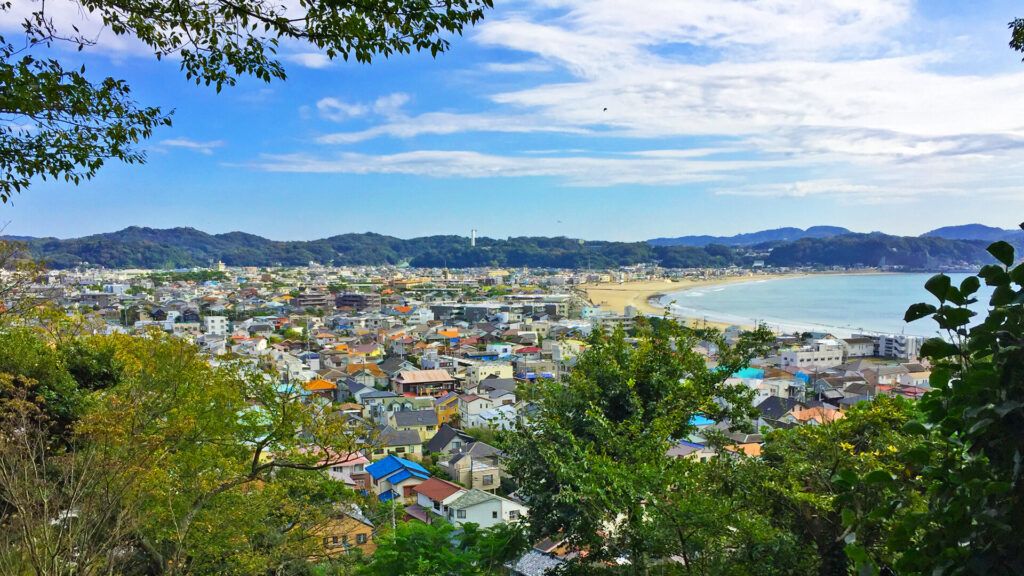
Kamakura is not just a place of historical and religious importance but also a center of Japanese culture. The city has a rich literary tradition and was home to many poets and writers who were inspired by its beauty and spiritual atmosphere. Among the most famous is the poet Matsuo Basho, who mentioned Kamakura in several of his haikus.
The traditional arts and crafts of Kamakura are also noteworthy. From the creation of Buddhist statues to tea ceremonies and Zen meditation, Kamakura has developed a culture of fine craftsmanship and aesthetic refinement that continues to be preserved today.
The Nature of Kamakura
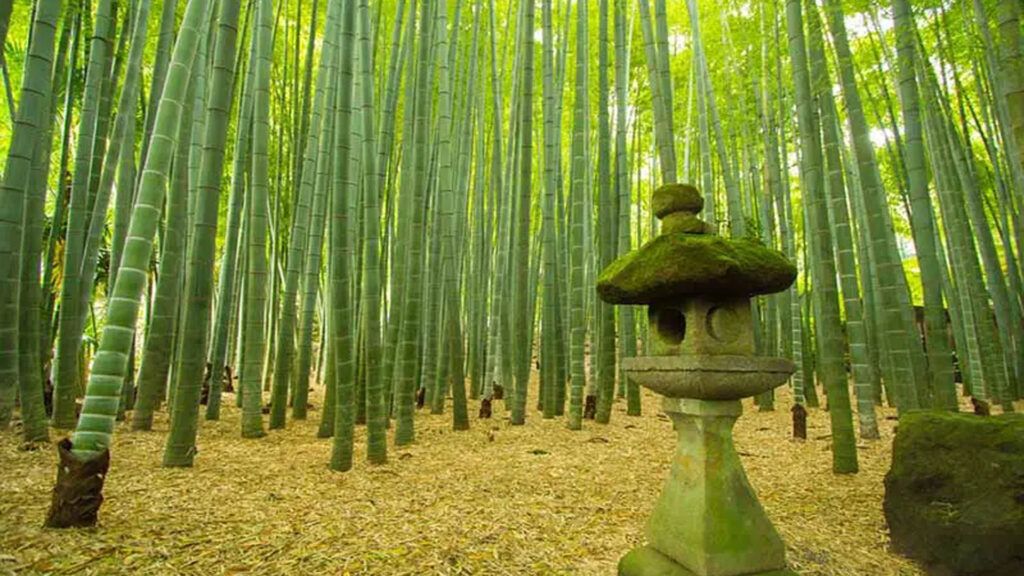
Kamakura is not only known for its cultural treasures but also for its natural beauty. The city is nestled between wooded hills and Sagami Bay, offering numerous opportunities for hiking and nature walks.
Several popular hiking trails run through and around Kamakura, passing through forests, along temples and shrines, and up to viewpoints that offer panoramic views of the city and the sea. The Daibutsu Hiking Trail, for example, leads from the Great Buddha of Kamakura to several other attractions, providing spectacular views along the way.
Kamakura is also famous for its beaches, which are particularly popular in the summer among locals and tourists alike. Yuigahama and Zaimokuza are the main beaches, offering a relaxed atmosphere, clear waters, and many beach cafés. The beaches are a wonderful place to end a day in Kamakura, perhaps after visiting the temples and shrines.
Kamakura is a city deeply rooted in history while simultaneously maintaining a vibrant, contemporary culture. Its Buddhist temples and Shinto shrines are not only religious sites but also testaments to Japan’s rich cultural history. The Great Buddha of Kamakura remains a symbol of serenity and spiritual constancy, attracting people from all over the world.
The blend of historical significance, spiritual depth, and natural beauty makes Kamakura a unique destination that offers something for everyone. Whether interested in history, religion, nature, or art, Kamakura leaves a lasting impression on the minds and hearts of its visitors, making it a place of inspiration and rejuvenation.
Culinary Specialties of Kamakura
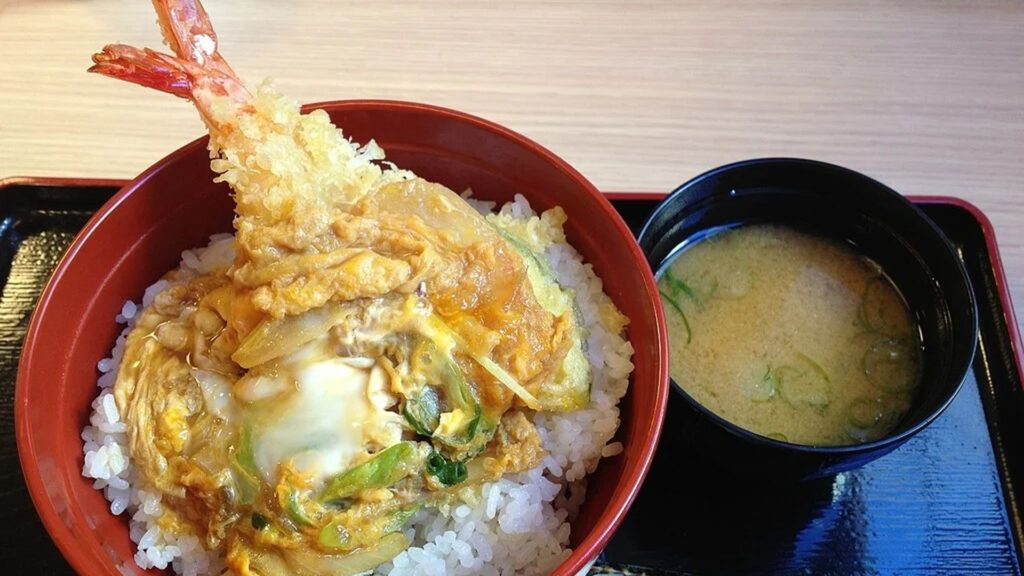
Kamakura is not only famous for its historic temples and shrines but also for its diverse and delicious cuisine. The city’s culinary offerings reflect its long history and coastal location, featuring a blend of traditional dishes and modern creations that highlight local ingredients and flavors. Here are some culinary specialties you must try when visiting Kamakura:
Shirasu: Fresh Whitebait
One of Kamakura’s most well-known delicacies is Shirasu, small white sardines that are served either fresh or dried. Due to Kamakura’s proximity to the coast, Shirasu is especially fresh and flavorful here. It is often served as a side dish with rice or as a topping on sushi and donburi (rice bowls). A popular dish is Shirasu-don, where Shirasu is served atop warm rice, often garnished with grated ginger and soy sauce. The delicate texture and slightly salty taste make Shirasu a true highlight of the regional cuisine.
Kamaboko: Traditional Fish Cake
Kamaboko is another typical dish enjoyed in Kamakura. This traditional Japanese fish cake is made from pureed white fish that is shaped and steamed. It is often presented in various colors and forms, making it a common addition to bento boxes or as a side dish in soups and noodle dishes. Kamakura has several shops that offer fresh, high-quality Kamaboko, often with creative and decorative designs.
Hojicha Ice Cream
Hojicha is a special type of green tea that is roasted, giving it a unique, slightly nutty flavor. In Kamakura, Hojicha ice cream is a popular specialty, combining the intense flavors of the tea with the sweet coolness of ice cream. This dessert is particularly refreshing after a day of exploring and pairs well with other traditional sweets that can be found throughout Kamakura.
Kaiseki: Traditional Japanese Haute Cuisine
For those seeking an authentic culinary experience, Kamakura offers Kaiseki, a traditional Japanese haute cuisine that consists of multiple small courses, using seasonal ingredients. A Kaiseki meal in Kamakura often includes a selection of fresh fish, vegetables, and regional specialties, artfully arranged and served in a carefully thought-out sequence. These meals are not only a feast for the palate but also for the eyes, as they are often presented on beautiful tableware.
Yuba: Soy Milk Skin
Yuba is the delicate skin that forms when soy milk is heated, known for its silky texture. In Kamakura, Yuba is served in various forms, such as sashimi, in soups, or rolled in dishes. Yuba is a staple of Shojin Ryori (Buddhist temple cuisine) and is an excellent example of the creativity found in the vegetarian dishes offered in Kamakura.
Enoshima-don: Seafood Rice Bowl
Although the dish is named after the nearby island of Enoshima, Enoshima-don is also popular in Kamakura. This dish consists of a bowl of rice generously topped with fresh seafood such as clams, shrimp, and squid. It is often drizzled with a special sauce that enhances the flavor of the seafood, offering a delicious maritime aroma.
Taiyaki: Fish-shaped Pancake
Taiyaki are sweet fish-shaped pancakes traditionally filled with anko (red bean paste). In Kamakura, you can find many variations of Taiyaki filled with different ingredients such as chocolate, custard, or cheese. This popular street food is a perfect snack to enjoy while exploring the streets and sights of the city.
Cafés and Tea Houses
In addition to these traditional dishes, Kamakura also boasts a vibrant and diverse culinary scene with a mix of Japanese and international restaurants, cafés, and tea houses. Many of these establishments focus on local ingredients and sustainability, underscoring the city’s character as a place of cultural and culinary heritage.
Kamakura is also known for its cozy cafés, where you can enjoy homemade cakes and pastries alongside a cup of freshly brewed coffee or tea. Some of these cafés offer vantage points from which to admire the beauty of the city and its surroundings.
Kamakura offers a rich culinary landscape that ranges from traditional Japanese dishes to modern interpretations. The fresh seafood, unique regional specialties, and handcrafted products make the city a paradise for food lovers. Whether you are a fan of traditional cuisine or eager to discover new flavors, Kamakura has something special for every palate. The combination of culinary tradition, high quality, and the city’s unique atmosphere makes dining in Kamakura an unforgettable experience.
Getting to Kamakura & Accommodation in Kamakura
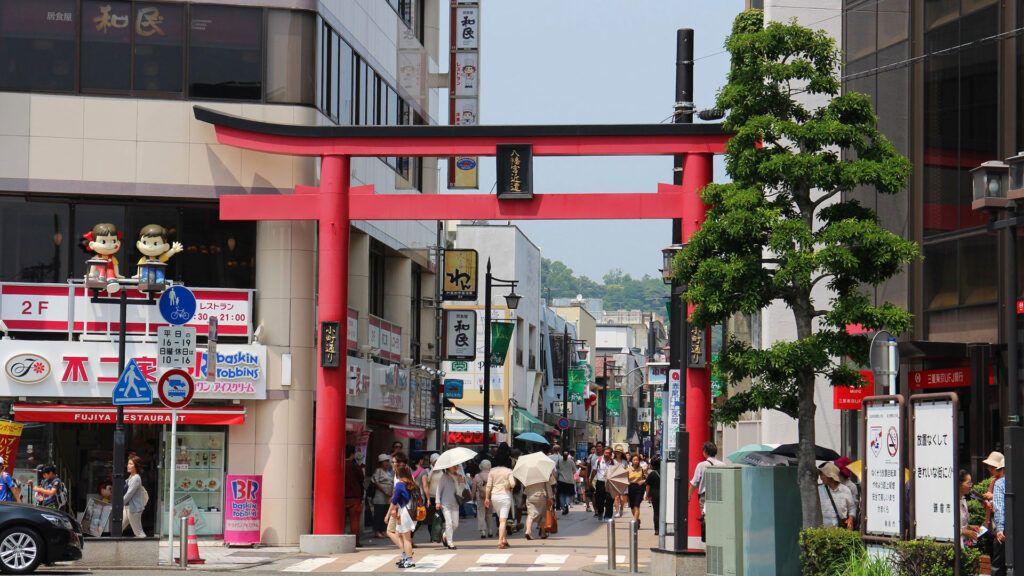
Kamakura is located about 50 kilometers southwest of Tokyo and is a popular destination for both Japanese and international travelers due to its accessibility. There are several convenient and quick ways to reach Kamakura from Tokyo, offering visitors flexibility and comfort.
By Train
The most common and easiest way to reach Kamakura is by train. There are several train lines that connect Tokyo and Kamakura:
JR Yokosuka Line: This direct train route is the fastest way to reach Kamakura. The journey typically starts at Tokyo Station and takes about an hour. Trains run regularly, making this a convenient option for travelers.
JR Shonan-Shinjuku Line: This line also offers a direct connection to Kamakura, but from Shinjuku, Shibuya, or Ikebukuro stations. These trains also take about an hour to reach Kamakura and are especially convenient for travelers staying in Tokyo’s western districts.
Enoden Line: The Enoden (Enoshima Electric Railway) is a scenic narrow-gauge railway that runs from Kamakura along the coast to Enoshima and Fujisawa. While not the fastest option, it offers a charming ride along the coast and through small villages, making it ideal for travelers who want to enjoy the scenic beauty of the region.
By Bus
There are also direct bus services from Tokyo to Kamakura, mainly offered by travel companies. These buses provide a comfortable alternative to the train and are a good choice for travelers who prefer a relaxed journey or who want to be taken directly to specific attractions in Kamakura.
By Car
For travelers who prefer flexibility, driving to Kamakura is also an option. The city is easily accessible via the Kanagawa and Yokohama highways. However, it’s important to note that parking in Kamakura can be limited and expensive, especially during peak seasons. Additionally, traffic congestion can extend travel times, particularly during rush hours.
Accommodation in Kamakura
Kamakura offers a variety of accommodation options to suit the different needs and budgets of visitors. From luxurious ryokan (traditional Japanese inns) to budget hostels and charming bed & breakfasts, Kamakura has something for everyone.
Ryokan
Staying in a ryokan is a wonderful way to experience traditional Japanese hospitality. These accommodations typically feature spacious rooms with tatami mats, futon beds, and often private onsen (hot springs) or baths. Dinner at a ryokan is usually a kaiseki meal, a multi-course feast that includes carefully prepared and beautifully presented regional specialties. Some of the most well-known ryokan in Kamakura also offer breathtaking views of the surrounding forests and mountains, making the stay even more memorable.
Hotels
Kamakura also boasts a good selection of hotels ranging from luxurious to mid-range options. These hotels offer modern comforts and are often located near the city’s main attractions, making them ideal for travelers who want to explore the city with ease. Some of the upscale hotels also provide wellness services, restaurants serving regional cuisine, and stunning views of Sagami Bay.
Guesthouses and Bed & Breakfasts
For travelers who prefer a personal and cozy atmosphere, guesthouses and bed & breakfasts in Kamakura are an excellent choice. These accommodations often offer an intimate setting and the opportunity to interact with the hosts, who can provide valuable tips for exploring the city. The rooms are often uniquely decorated, giving guests a glimpse into local life and culture.
Hostels
For budget-conscious travelers and backpackers, Kamakura also offers a range of hostels. These accommodations are not only affordable but also provide opportunities to meet other travelers. Many hostels in Kamakura offer both dormitory-style beds and private rooms and are often located near key attractions. Some hostels also offer bike rentals, which is a great way to explore the city and its surroundings.
Getting to Kamakura is easy and convenient due to its excellent transportation links from Tokyo. Whether by train, bus, or car, there are many options for reaching the city. Once in Kamakura, visitors have a range of accommodation options available to make their stay enjoyable and memorable. Whether you choose a luxurious ryokan, a comfortable hotel, a charming bed & breakfast, or an affordable hostel, Kamakura offers suitable lodging for every type of traveler. The combination of easy accessibility and diverse accommodation options makes Kamakura an ideal destination for a relaxing and culturally enriching stay.
My Conclusion
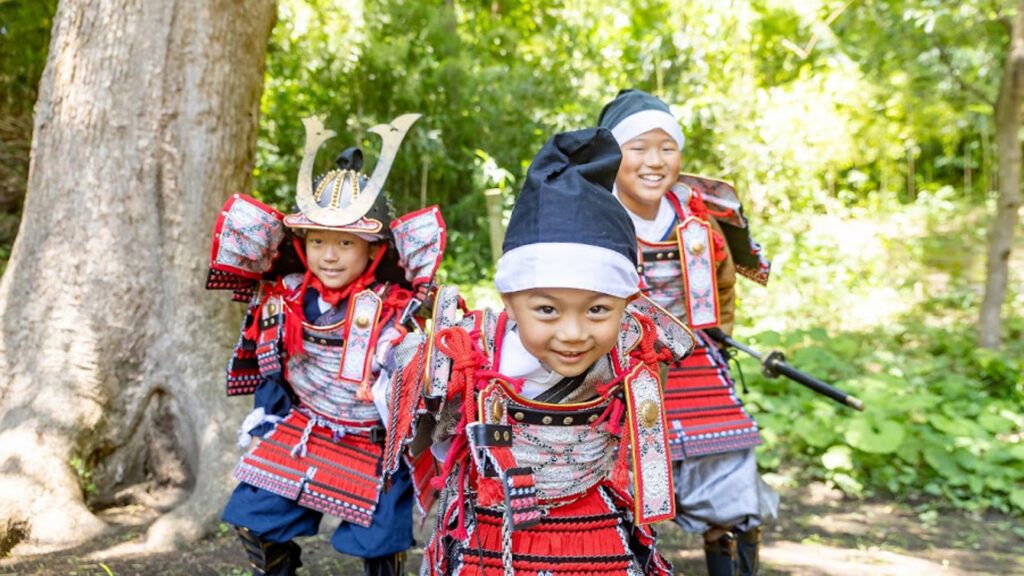
A visit to Kamakura is more than just a trip to a historic city—it’s a journey into the soul of Japan. Once the political center of the country, the city still holds deep spiritual and cultural significance today. The majestic temples, serene shrines, and the impressive Great Buddha not only provide a glimpse into the past but also offer a chance to immerse oneself in a world of inner peace and reflection.
Kamakura captivates with its unique blend of history, nature, and spirituality. As you wander through the ancient paths once trodden by samurai and monks, you can feel the connection between the past and present that is alive in every corner of the city. It’s not just a place to sightsee but also a place to pause, reflect, and enjoy.
Culinarily, Kamakura offers a wealth of traditional delights that will excite any food lover’s heart. From the fresh seafood to the refined flavors of hojicha ice cream—every bite tells a story of the region.
What truly makes Kamakura special is its atmosphere. Despite its proximity to Tokyo, the city exudes a tranquility that makes it easy to leave behind the hustle and bustle of daily life. The peaceful gardens, the gentle rustling of trees, and the picturesque landscapes create a serene oasis where one can recharge and discover the beauty of simplicity.
Overall, Kamakura is a destination that touches both the heart and mind. It is a place where one can not only experience Japanese culture and history but also find a deeper connection with oneself. For me, Kamakura was not just a city I visited but an experience I will remember—a place I wish to return to again and again to relive its tranquil beauty and timeless charm.

